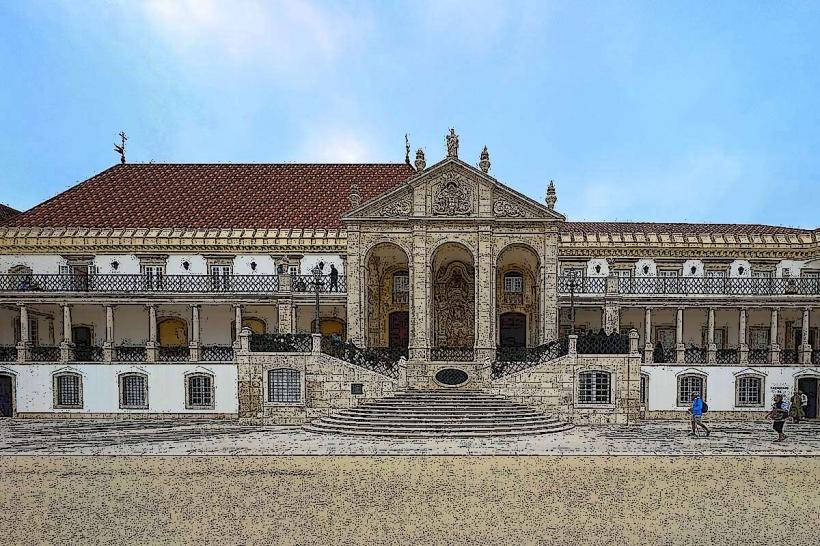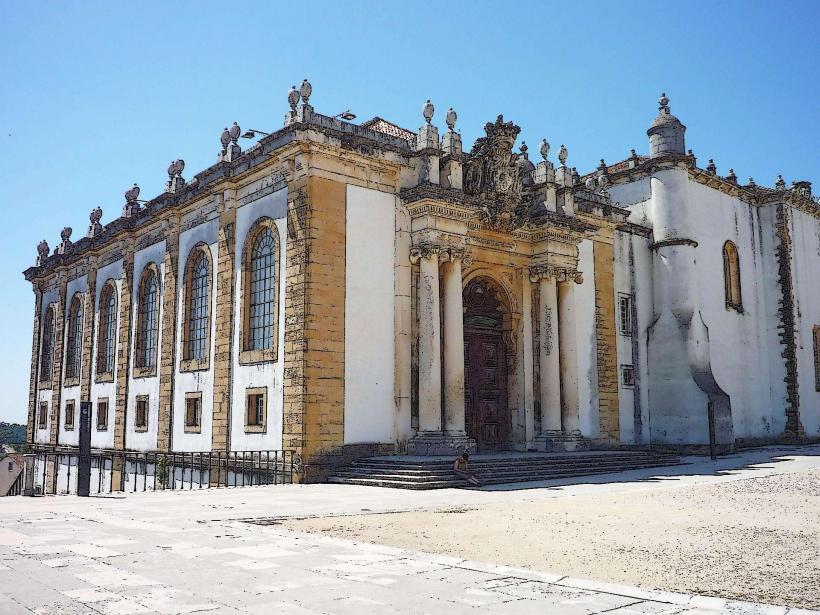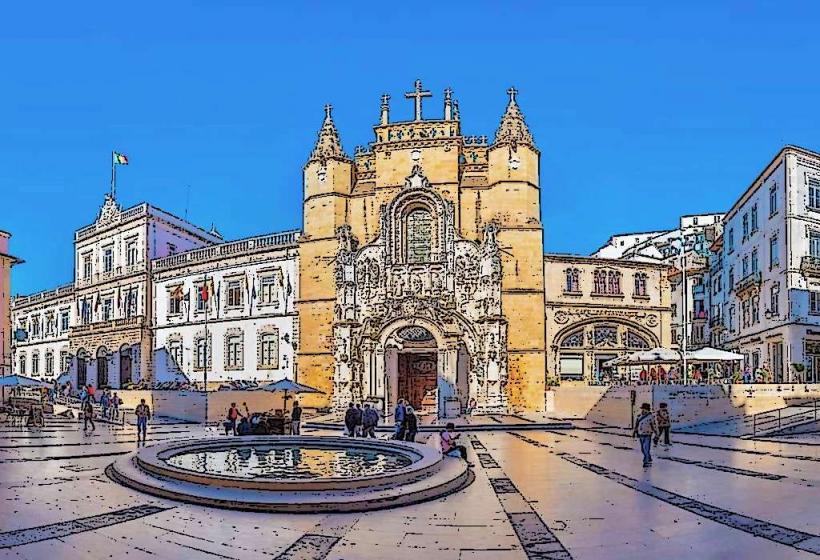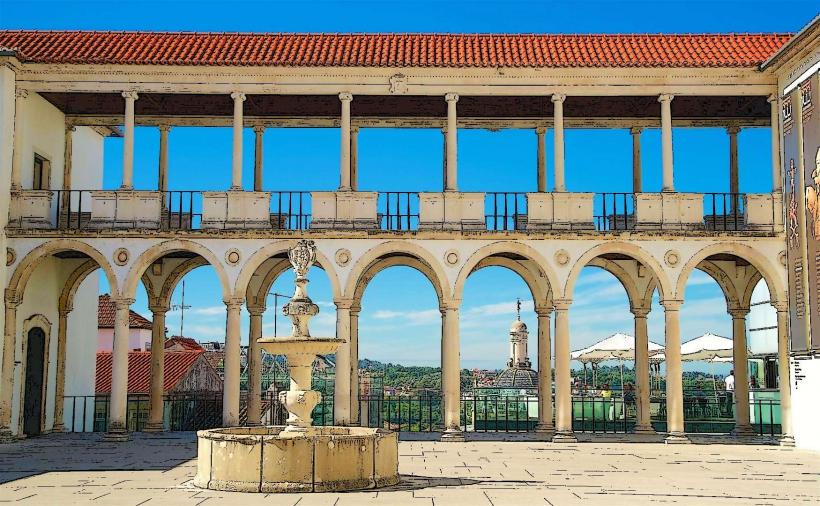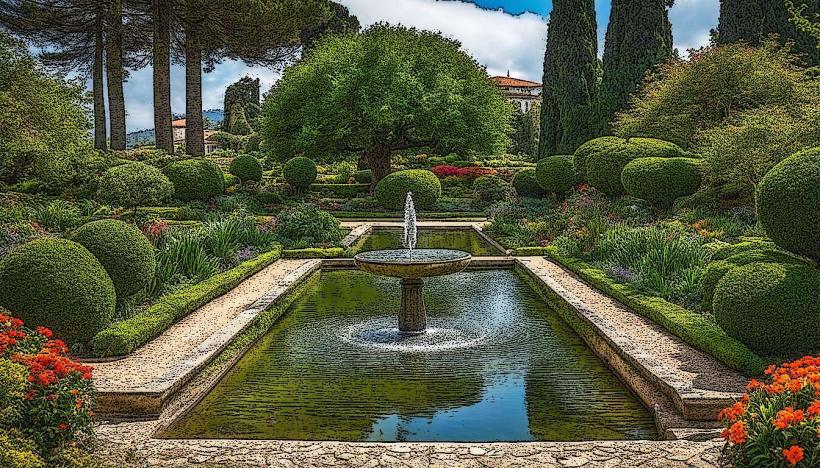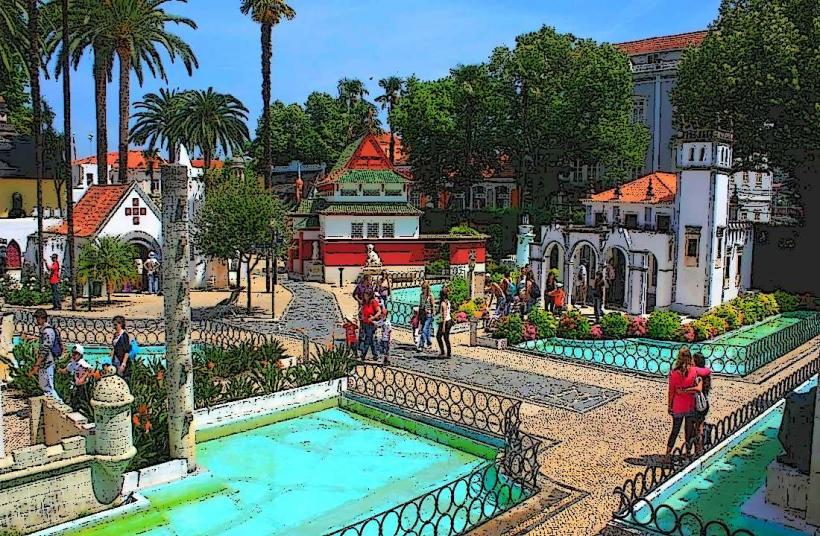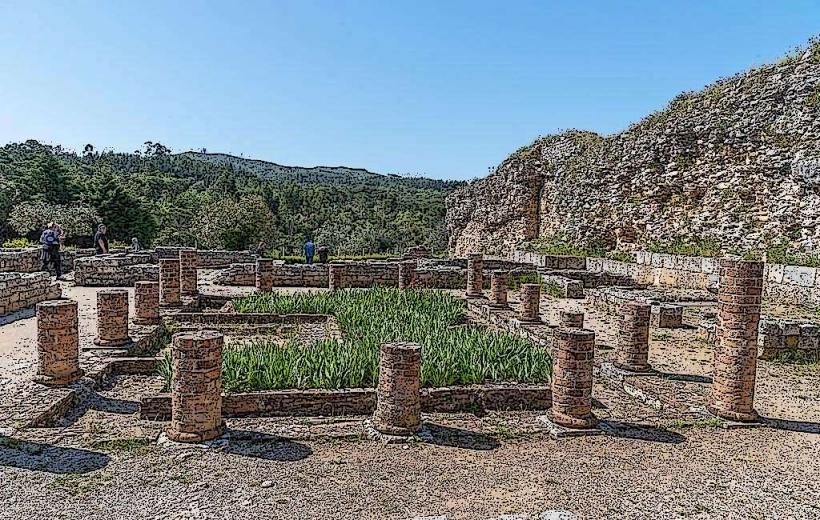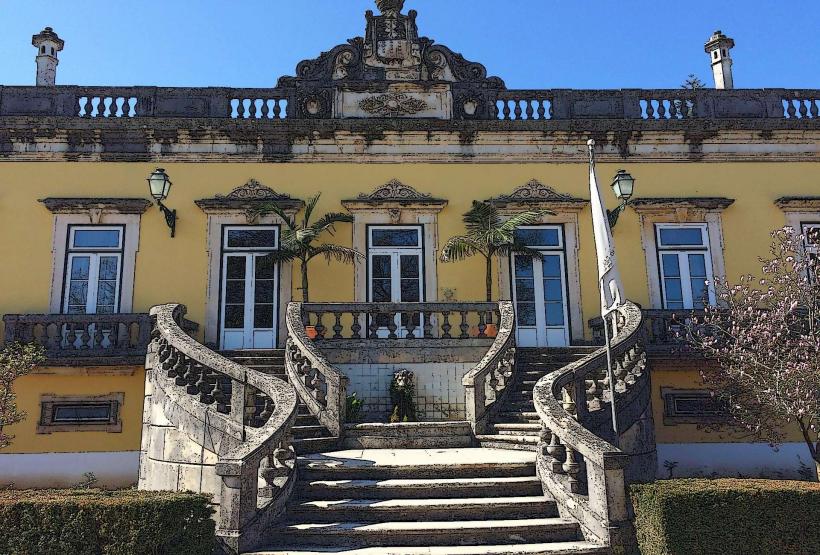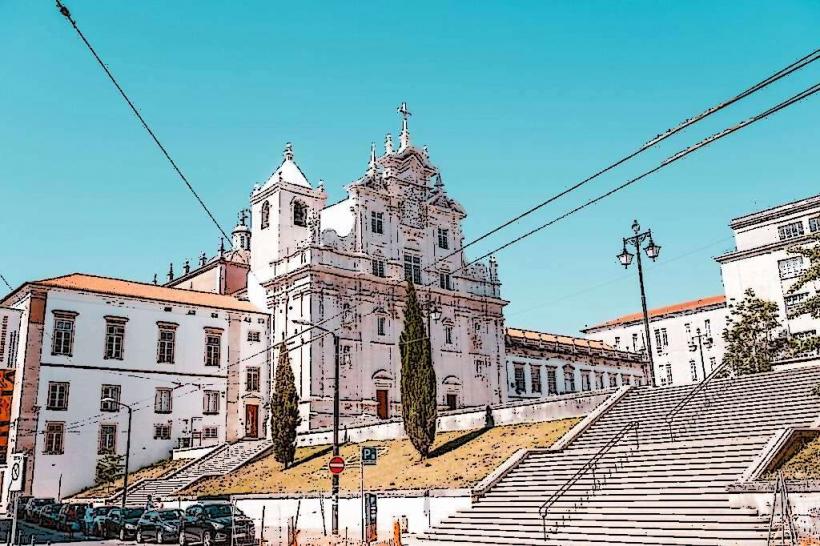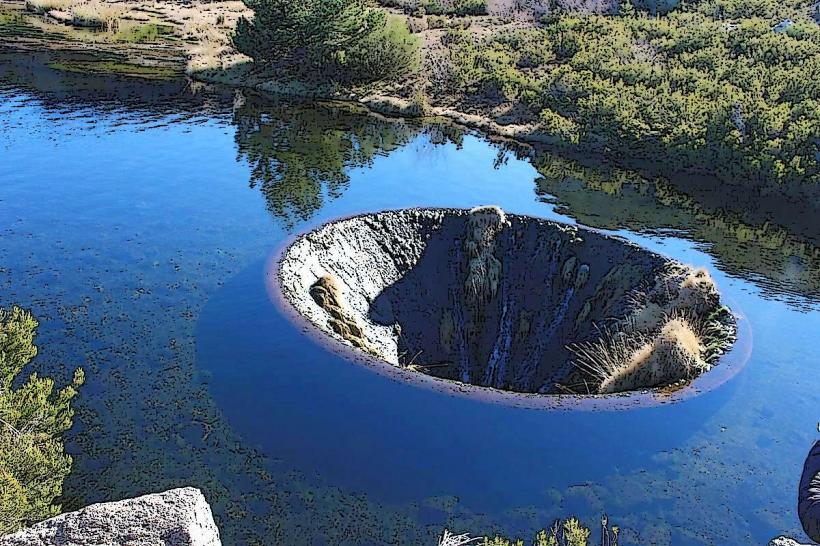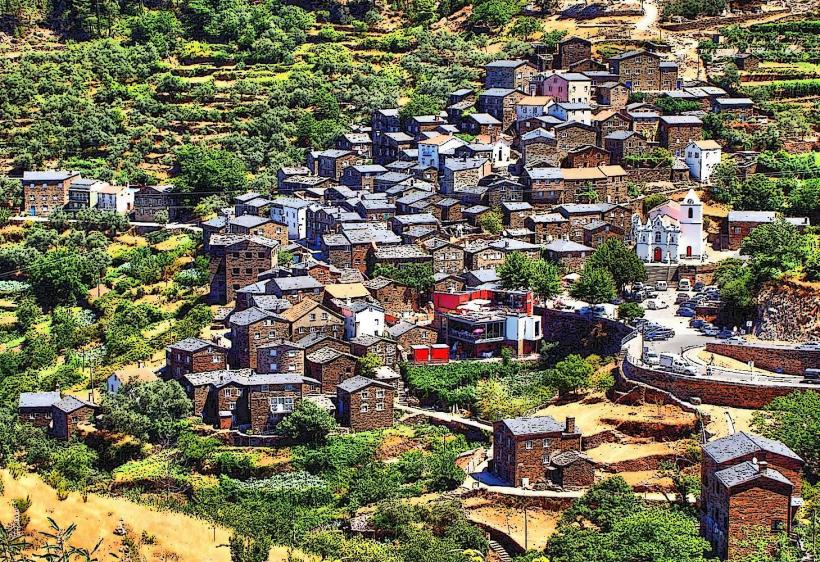Information
Landmark: Old Cathedral of CoimbraCity: Coimbra
Country: Portugal
Continent: Europe
The Old Cathedral of Coimbra (Sé Velha de Coimbra) is one of the most significant and iconic landmarks in the city of Coimbra, Portugal. This Romanesque-style cathedral is not only a religious center but also an architectural and historical treasure that offers a glimpse into the medieval past of Coimbra. As one of the oldest and most important churches in Portugal, the Sé Velha is a UNESCO World Heritage site, located within the historic center of the city.
1. Historical Background
- Foundation and Early History: The Sé Velha was constructed in the 12th century as part of the growth of Coimbra after it became the capital of the Kingdom of Portugal under King Afonso I (Afonso Henriques). The cathedral was built on the site of a former Visigothic church, and its construction began around 1160 and was completed in the early 1200s.
- Religious Importance: During the Middle Ages, Coimbra was an important religious and cultural hub in Portugal. The Sé Velha served as the seat of the Bishop of Coimbra and a center of Christian worship. The cathedral also played a significant role in the religious life of the city, which was one of the main cultural and intellectual centers of the time.
- Transition to Royal Chapel: The Sé Velha served as the main cathedral until the 16th century, when the New Cathedral of Coimbra (Sé Nova) was built, which led to a gradual decline in the church's importance. However, it still holds great historical and religious value, and its monumental architecture has made it a symbol of Coimbra's medieval heritage.
2. Architectural Features
- Romanesque Architecture: The Sé Velha is a prime example of Romanesque architecture, characterized by its robust, fortress-like structure, thick walls, and rounded arches. The church's exterior is imposing, with a large façade and a fortified tower, which gives it a distinct, castle-like appearance.
- Facade: The main entrance to the cathedral is framed by a decorative Romanesque portal, with intricate carvings depicting biblical scenes and Christian symbolism. The portal is crowned by a rose window, a hallmark of Romanesque and Gothic architecture.
- Bell Tower: One of the most striking features of the cathedral is its bell tower (or campanile), which stands tall over the surrounding buildings of Coimbra. The tower was originally part of the fortress-like defensive structure and offers panoramic views of the city. It was later reinforced and modified in the 16th century.
- Nave and Interior: Inside, the Sé Velha has a three-aisled nave with a wooden ceiling in the Mudéjar style, which is a blend of Christian and Moorish influences. The interior is dimly lit, adding to the church’s solemn atmosphere, with large columns and arches supporting the structure.
- Chapel of the Blessed Sacrament: At the eastern end of the cathedral is the Chapel of the Blessed Sacrament, which is decorated with beautiful tile work and golden altarpieces. This space is known for its serene and sacred ambiance.
- Transept and Crossing: The cathedral’s transept and crossing are notable for their grand scale and simplicity. The crossing is the point where the nave intersects with the arms of the transept, and it was traditionally the area where the clergy would perform special liturgies.
3. Notable Artworks and Features
- Romanesque Sculptures: The Sé Velha is adorned with Romanesque sculptures, particularly on the main portal and interior columns, which depict various biblical scenes, saints, and angels. These sculptures are significant examples of Romanesque iconography in Portugal.
- Tile Work: The church features some decorative azulejos (traditional Portuguese tiles), especially in the Chapel of the Blessed Sacrament. These tiles often depict religious scenes or patterns that reflect the artistry of the time.
- Chancel and Altarpieces: The chancel (the sanctuary area) is home to an altarpiece that is intricately carved and painted, showcasing Christian iconography. The altarpiece is a fine example of religious art from the period.
- Romanesque Columns and Arches: Inside the cathedral, the columns and arches are significant examples of Romanesque design, contributing to the cathedral's massive, sturdy feel. The columns are decorated with fine carvings, some of which depict scenes from the Bible.
- Tomb of King Afonso I: One of the most notable historical features of the Sé Velha is the tomb of King Afonso I (Afonso Henriques), the first King of Portugal, who was buried here in the 12th century. His tomb reflects the significance of the church as a royal and religious center during the early history of Portugal.
4. Cultural and Religious Role
- Religious Services: Today, the Sé Velha continues to serve as a place of worship for the faithful, although it is no longer the main cathedral of Coimbra. It holds regular mass services and special religious events, especially during the feasts of the city's patron saints and significant Christian holidays.
- Historical Significance: As one of the oldest and most important religious buildings in Portugal, the Sé Velha is an essential part of the heritage of Coimbra. It has been an important part of the city’s identity and the history of the Portuguese monarchy. It is also significant in the development of Romanesque architecture in the Iberian Peninsula.
- UNESCO World Heritage: The cathedral’s historical importance, along with the University of Coimbra and the city’s other historical landmarks, has led to its inclusion in the UNESCO World Heritage List, recognizing it as an integral part of the cultural landscape of Coimbra.
5. Visitor Experience
- Guided Tours: Visitors to the Sé Velha can take part in guided tours to learn more about the cathedral’s history, architecture, and significance. These tours often provide detailed explanations of the building’s Romanesque design, the religious ceremonies that once took place here, and the role of the cathedral in the development of Portugal.
- Panoramic Views from the Bell Tower: The bell tower of the cathedral offers stunning views of Coimbra and its surrounding landscape. Climbing the tower is a must for visitors, as it provides a unique perspective of the city and the surrounding hills.
- Cultural Events: The Sé Velha is also used for cultural events, including classical music concerts, particularly organ music and choir performances, which make use of the church’s excellent acoustics. The church’s rich history and reverent atmosphere make it an ideal setting for music and cultural events.
- Photography: The Sé Velha is a popular spot for photographers due to its striking architecture, the intricate details of its sculptures, and its stunning location within the city.
6. Nearby Attractions
- University of Coimbra: The University of Coimbra, one of the oldest in Europe, is located nearby and is a UNESCO World Heritage site. The Joanina Library, Royal Palace, and University Tower are all nearby and worth visiting for their historical and architectural significance.
- Almedina Tower: The Almedina Tower is another historical landmark in Coimbra, located near the cathedral. It is part of the old city walls and offers a glimpse into the medieval fortifications of the city.
- Mondego River: The Mondego River, which runs through Coimbra, provides scenic views and opportunities for walking or boating along its banks. The river adds to the picturesque landscape surrounding the cathedral.
7. Best Time to Visit
- Spring and Summer: The best time to visit the Sé Velha is during the spring and summer months when the weather in Coimbra is pleasant and ideal for exploring outdoor and historical sites.
- Autumn: The autumn months are also a great time to visit if you prefer a quieter, less crowded experience while still enjoying mild temperatures.
- Winter: While winter is cooler and quieter, it can be a peaceful time to visit the cathedral, particularly for those looking for a reflective or less tourist-heavy experience.
8. Conclusion
The Old Cathedral of Coimbra (Sé Velha) is a monumental piece of Portugal’s history, offering a blend of architectural beauty, religious significance, and cultural heritage. Whether you’re drawn to its Romanesque design, its role in the history of Portugal’s monarchy, or simply its place as a symbol of Coimbra, the Sé Velha is a must-see landmark that provides visitors with a deep understanding of the city’s past and its importance in Portuguese culture.

